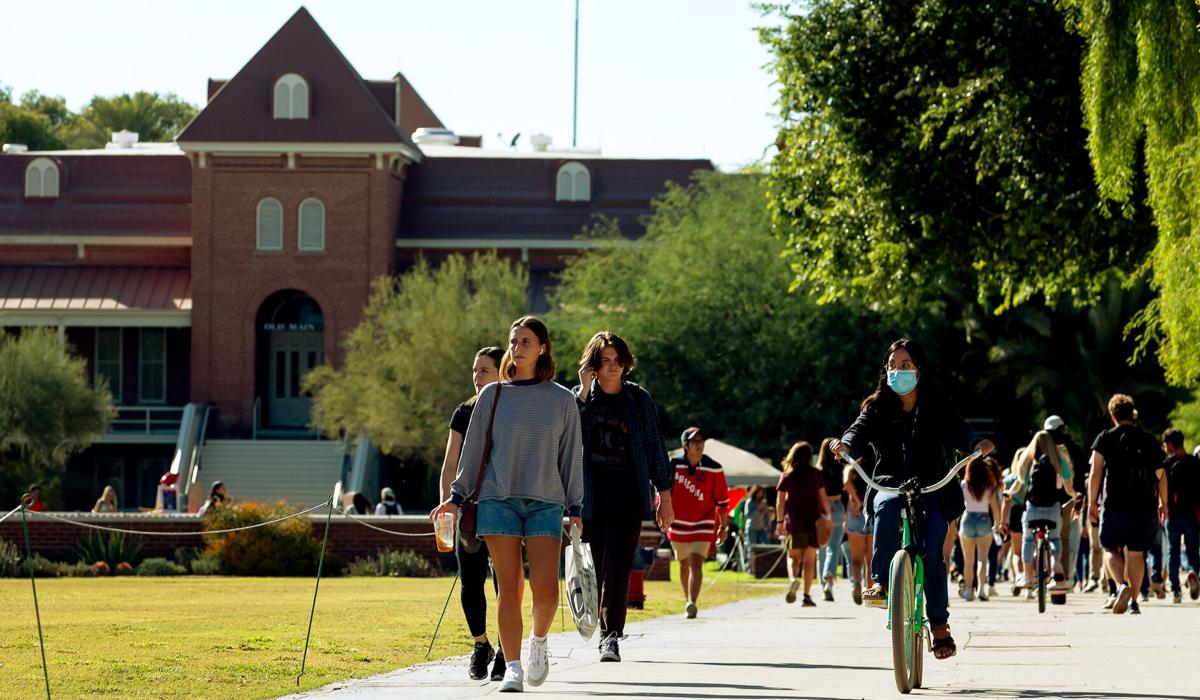Arizona’s flagship university has big plans to earn its reputation as a major research institution.
Since 2016, the University of Arizona has increased what it spends on research from $604.5 million to $791 million in 2021. That makes the UA the 19th-highest spender on research and development among public institutions, according to the National Science Foundation’s Higher Education Research and Development Survey.
Despite its solid ranking, the UA sees room for improvement, and it has laid out a comprehensive strategy for spending at least $1 billion on research and development by 2025.
“Our goal is to make Arizona the resilient state,” Betsy Cantwell, the UA’s senior vice president for research and innovation, said at a meeting of the Arizona Board of Regents held at the UA on Thursday. “We aim to create a world where human potential is realized, and we’re all working together to create solutions to big problems so that our communities in Arizona can thrive.”
So how will the UA go about achieving that goal by growing its research footprint?
Cantwell described a multi-pronged approach that includes:
Stimulating the research capacity of early-career faculty.
Going after large projects with big returns on investment.
Aligning with President Joe Biden’s focus on multidisciplinary research.
Hiring mid-career faculty from other institutions who have outside research experience.
Increasing industry interactions.
With a 25% win rate for federal research sponsors, tenure-track faculty members at the UA, who took home an average of just under $500,000 in awards in 2020, are already out-earning their peers at other institutions by an average of 5%.
Within that context, Cantwell posed this question: “How can we make faculty even more productive within the confines of what they are capable of doing?” There’s a limit to what an individual faculty member can deliver, Cantwell acknowledged, but “thinking about research in the context of additional types of employees who can partner with our most productive faculty and bring some of these large awards to our campus.”
In addition to engaging more faculty members in research, “We are focused on both undergraduate research experiences,” Cantwell said. “My personal goal — and I think the provost’s goal and a goal for our university — is that we expand our capacity to deliver research experiences for our undergraduates as fast and as much as possible.”
Many of the undergraduate research opportunities that exist now, as well as multimillion-dollar research initiatives like the Precision Aging Network, have been supported in part by the Board of Regents’ Technology and Research Initiative Fund.
On Thursday, the board approved the UA to receive $32 million a year from the fund for the next three years. That money will go toward further expanding undergraduate research opportunities, support of health care initiatives to benefit aging populations and an expansion of cyber defense initiatives.
But to reach its $1 billion research goal over the next several years, the UA will still have to bridge a $125 million gap between current growth projections and its desired $1 billion benchmark.
“Each of our units are developing their own strategies for their component of how they fill that gap between where we could get to and $1 billion,” Cantwell said. The College of Applied Science and Technology, the College of Engineering and the School of Health Sciences have all put together plans for bringing in millions more research dollars to their individual colleges by the mid-2020s.
Health Sciences, which houses the UA’s medical, nursing, pharmacy and public-health programs, is leading the way on that effort. Right now, it spends about $184 million a year on research but wants to increase that to about $413 million by 2025.
Its strategy for doing that includes:
Building on existing strengths and looking for short-term opportunities including diversity, equity and inclusion across all Health Sciences research, identifying supplements and aligning with federal budget priorities.
Investing in infrastructure and people needed for big collaborative grants.
Continuing to recruit researchers with priority specialties like healthy aging, pain and addiction, and drug discovery.
A growing endowment
Expanding the UA’s research footprint was one of UA President Robert Robbins’ big goals when he was hired in 2017. Another one was to push the UA’s endowment past $1 billion, which was achieved earlier this year.
Part of that was because of an exceptional year for investments, but this year’s donations also included two multimillion-dollar gifts that resulted in the renaming of the W.A. Franke Honors College and the R. Ken Coit College of Pharmacy.
Now Robbins, who previously worked as CEO and president of the Texas Medical Center, is setting a new goal of growing the endowment to $2 billion — and to hit $1.5 billion by next year.
“There’s been an intentional and strategic new direction for the UA Foundation around having gifts go to the endowment — for endowed professors, endowed research funds and scholarships,” said Robbins. “If you look at some of these most recent gifts, a lot of it is for endowed scholarship funds, so we’re really happy with the direction that’s going.”
Regent Bill Ridenour said he’s already seen the benefits of Robbins’ commitment to expanding the university’s reach.
“What has really changed over the past few years is the perception of the University of Arizona,” Ridenour told Robbins Thursday. “I think the perception was that it’s a great university, but it’s not sure where it’s going. But that perception has completely changed.”





